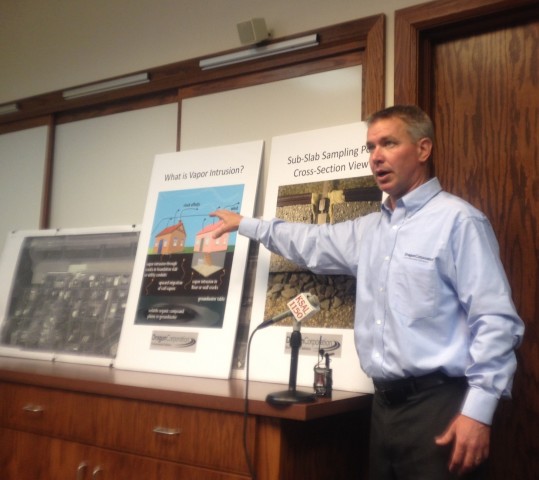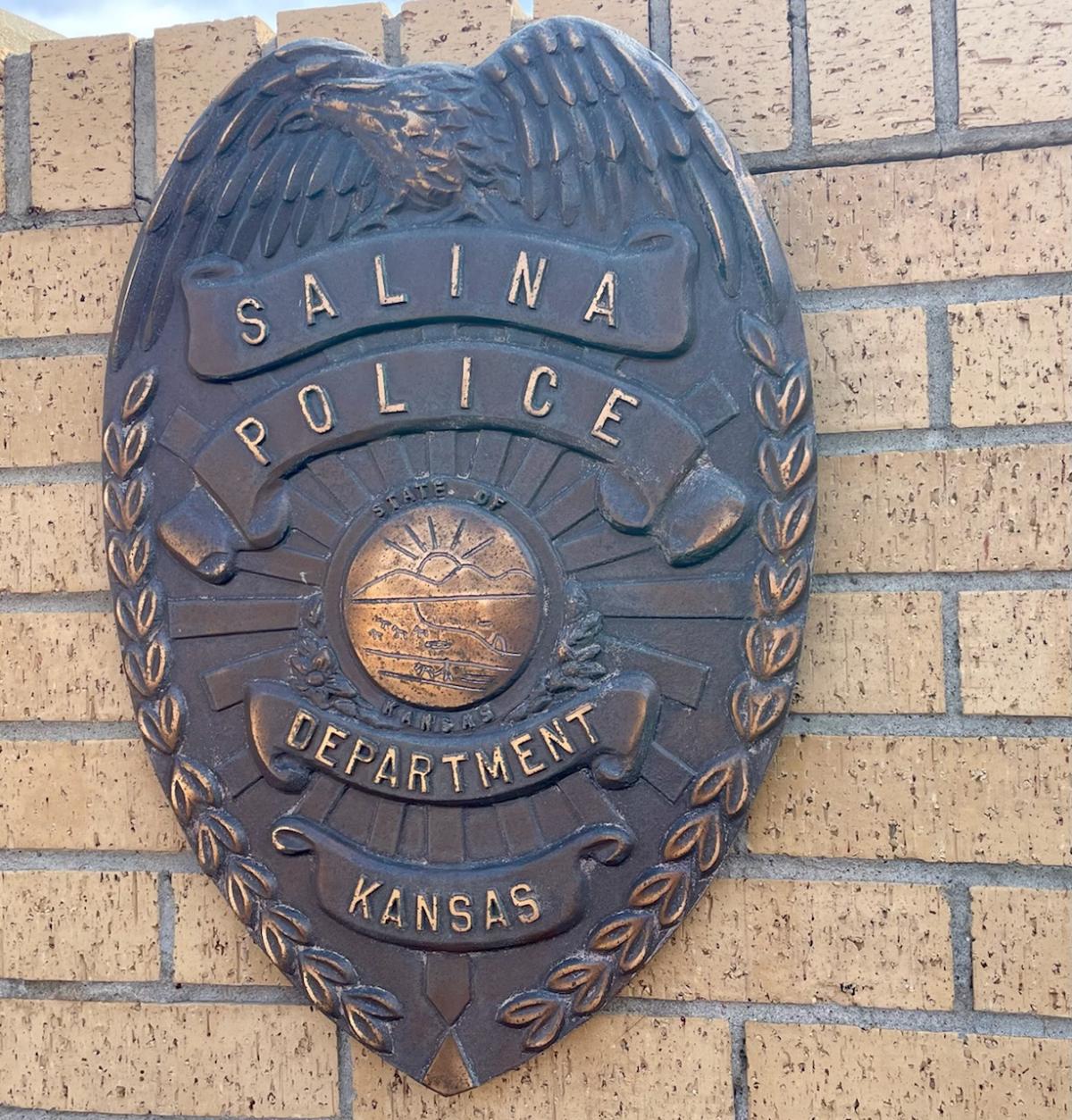Field work started this week in a project to clean up contamination in the Salina Airport Industrial Center.
At issue is contamination, things like solvents that have seeped into the ground, left behind when the Air Force vacated the base. The area is now the Salina Regional Airport. The main concern is two large underground plumes of contamination, one in the north part of the Airport Industrial Area, and another on the south end. A large plume of the solvent trichloroethylene, or TCE, is in the groundwater and soil. TCE at the time was used as an industrial solvent and has since been classified as a human carcinogen.
Officials briefed the media Friday morning on the progress of the project.
Senior Environmental Engineer Matthew Schroeder from the Dragun Corporation said that it is a very large project. It encompasses 4,000 acres that have contaminated areas, including among other things an 8,000 foot contamination plume.
Testing began on Wednesday at several buildings. Vapor samples and sub surface samples are being collected. To obtain the sub surface samples, small holes are being drilled. Initially, samples are being taken at 11 different buildings.
A more visible part of the project will begin in mid-June, when ground water sampling will begin. Samples will be obtained from about 150 wells in the area. Shortly after that, work will begin on Plume D, a large plume of contamination that is approaching a city water supply.
Martha Tasker from the City of Salina said that there is no imminent threat of the contamination getting into the city water supply. If it would, current equipment used to purify the water would take care of it. New equipment installed in the late 1990s to deal with contamination in downtown Salina from dry cleaning businesses would be able to filter the airport contamination as well.
Schroeder says that the most visible signs will be drilling rigs in the airport area. Most of the work will be conducted on public right of ways. Some, though, will be done on private property along Interstate 135. In those cases, officials will work with the property owner.
This first investigative phase of the project could take up to three years to complete, with teams of environmental professionals sampling soil, groundwater, surface water, sediment and air.
Once all of the samples are collected, local officials will work with the Kansas Department of Health and Environment on a cleanup plan. After that, depending on what is needed to do, cleanup could take 20 – 30 years to complete.
Late last Spring local, state, and federal officials reached an agreement on cleanup funding. As part of the agreement, the federal government will fund 90 percent of the cleanup, with local entities funding 10 percent. Local officials had been trying to get federal help in cleaning up contamination that was left when the military vacated Schilling Airforce Base in the late 1960s.



